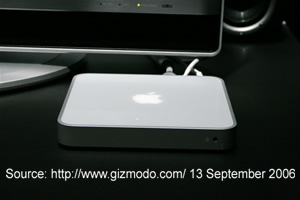When I was in grad school in the early 1980s, I chose to go to Ohio State, not just because I am a Buckeye who loves his home state, but because Warner Cable had built Qube, the first truly interactive television service in the U.S. (we provincial Americans think we're first at everything, but maybe someone else did it somewhere). When I began my academic career at Bowling Greem State University (no, not Western Kentucky in Bowling Green. KY), I was already fascinated by how technology was on the verge of changing broadcasting, in particular.
When I began teaching a new media class, I began to make predictions (my dissertation is on forecasting the market for home video completed in March 1985). When the web came, it was under the culture of "over my dead body will there be commercials on the Internet's web!" My dad was a history professor, and it's in my blood. The Internet was of little interest to anyone other than public and private scientists and grad students like me. Yes, I learned Unix. But history is quite clear in the United States: we accept the bargain of advertising subsidizing media content that we perceive to be "free." It wasn't long before the graphics-ready Web was attracting the business innovators who saw it's potential as a new communication medium.
I remember telling my students that the could "log in" to a television station in the future and pick a channel to watch (my example was KING-TV when the Cleveland Indians played at Seatle). Well, I've been preaching that the web would evolve into a medium that would allow delivery of video programs anytime and anywhere there was a computer with an Internet connection. Once again, I was suprised by my daughter who, while I was watching OHIO STATE beat Texas on "ESPN on ABC," was watching her Disney Channel movies on computer via my house's generic wireless system. She was watching

the Suite Life of Zack and Cody on the computer. The video appeared to be about 300 by 400 pixels, perhaps larger. But the audio was great and the video seemed flawless, and my home wireless network is nothing special. I was stunned at how good the video was. I saw no artifacts and there were a lot of quick cuts in the show as well as plenty of color on the set and in the actors' clothes.
I let her teach me how to navigate the site (which I'm not sure I can do without her!). Once again I found myself, eyes wide open, with another new video source on the web that I somehow missed. This is interactive television by anyone's definition from watching the linear show (and FF or rewind as desired), picking from what looked to me to be a fairly complete listing of the Disney Channel's lineup. And there are plenty of games that can be played as well. I actually searched for advertising and didn't see it (clearly you can consider the entire site an ad for Disney, but there was nothing I saw that would allow me to, for example, purchase a stuffed animal like Winnie the Pooh. As a parent, I am thrilled with the lack of advertising, while cognizant of the inherent Disney uber alles.
I had to check Nickelodeon's web site and it didn't seem to hold a candle to Disney, but I'll bet it will soon. And let me be clear: I didn't spend much time on the Nickelodeon site. The Disney Channel site is immediately colorful with lots of button animations with sound. By the way, there is also a one-year-old medium sized TV in the same room, but my daughter chose the computer over the TV. Very interesting.
Check them out and let me know what you think.
You may use this content (better still, argue with me!), but please cite my ideas as © 2006, Dr. Bruce Klopfenstein. Find any typos! Don't smite me, let me know!
 Thanks blogger community for solving my mysterious error. I'll hang on to
Thanks blogger community for solving my mysterious error. I'll hang on to 





